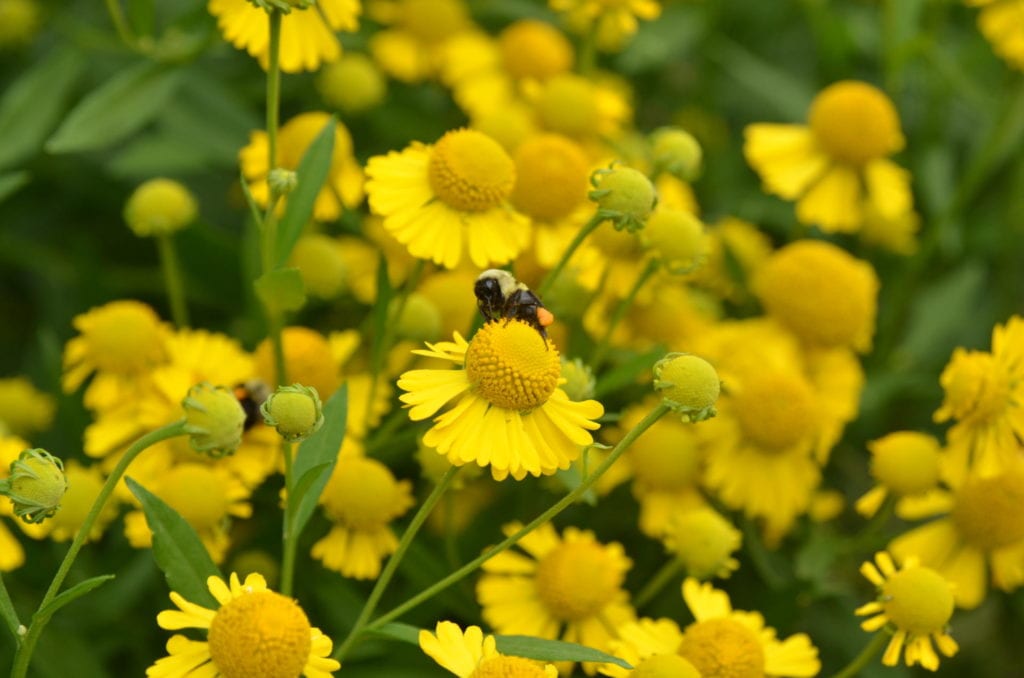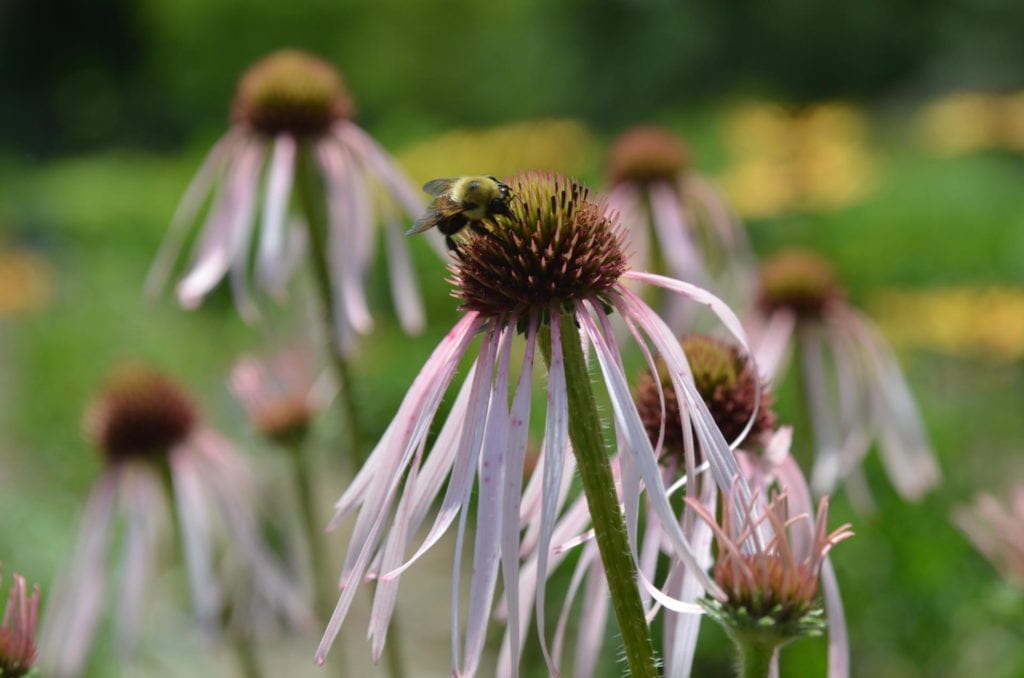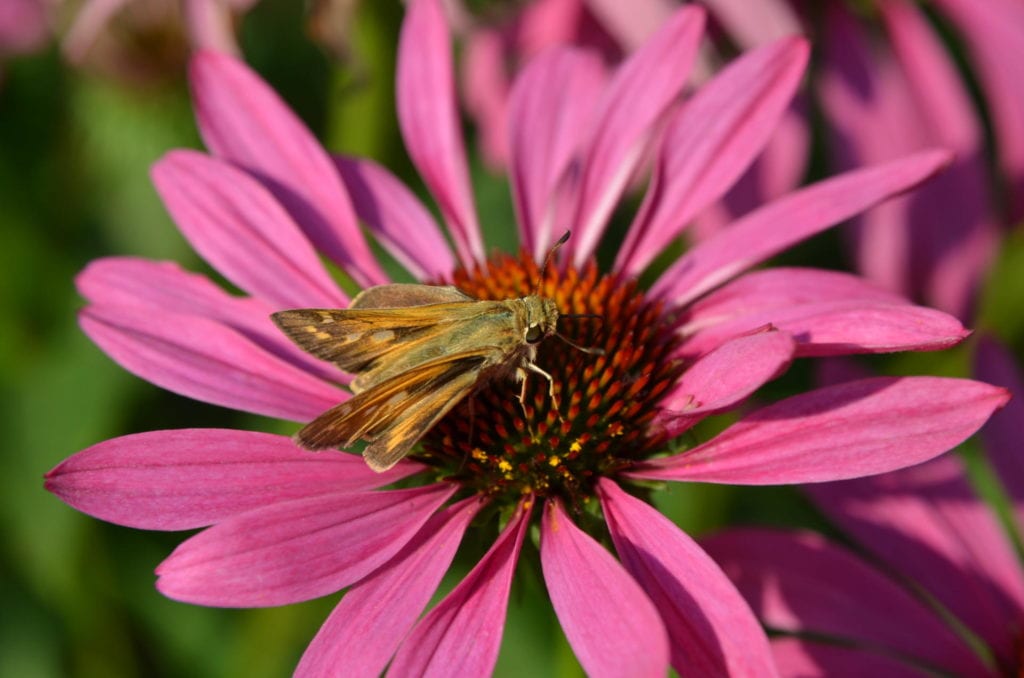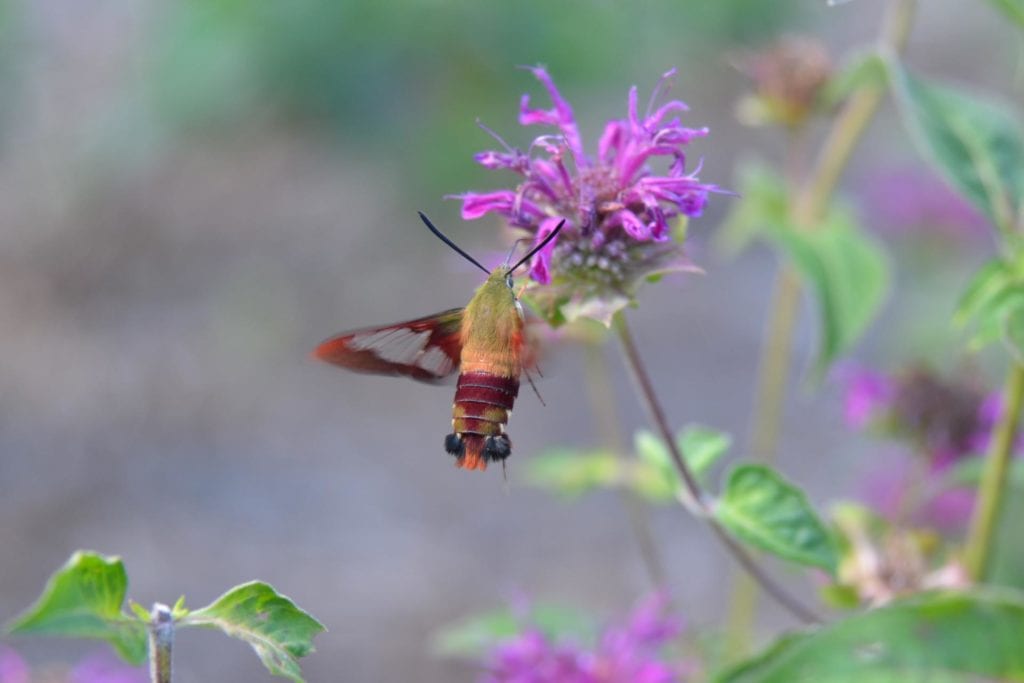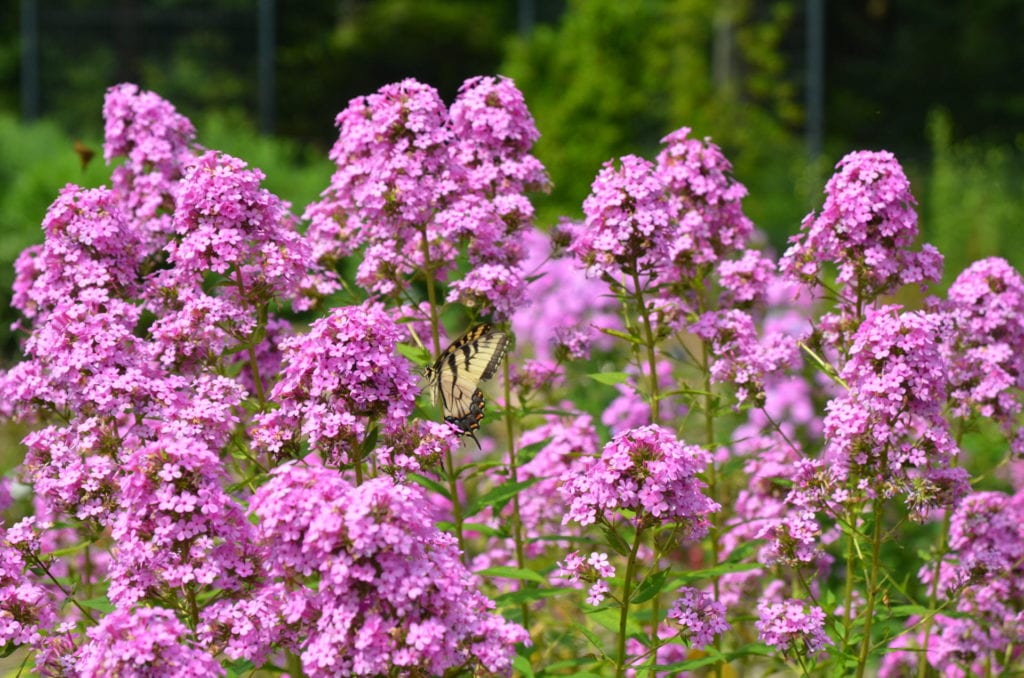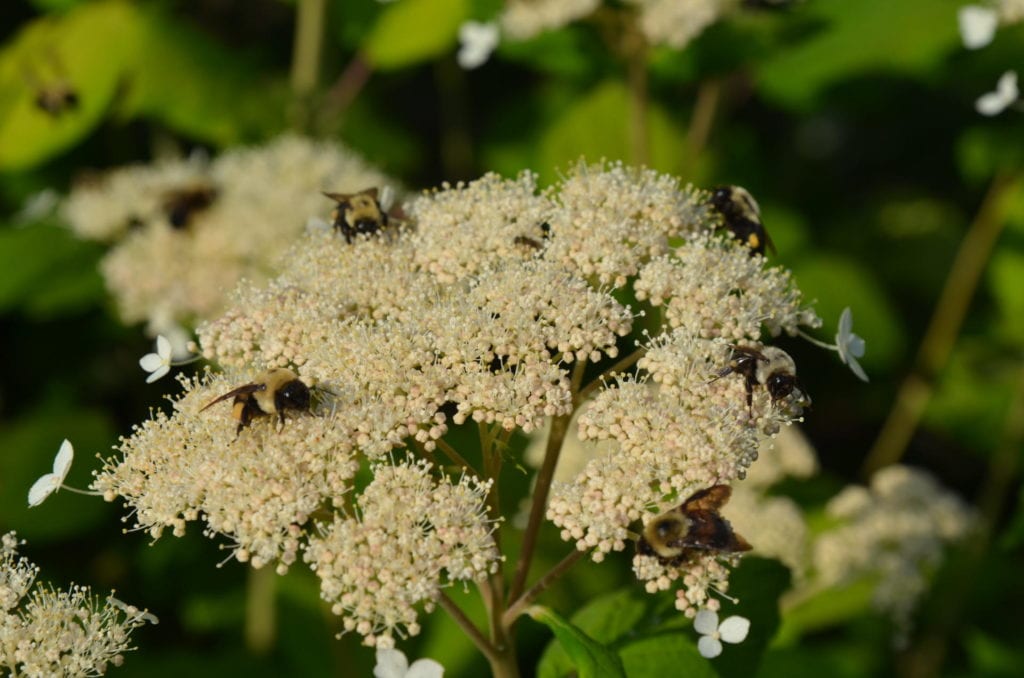by Sam Hoadley, Manager of Horticultural Research
Mt. Cuba Center’s mission is to inspire an appreciation for the beauty of native plants and a commitment to the native habitats that protect them. The Trial Garden is one of many programs that Mt. Cuba Center uses to broadcast this message to a larger audience with an aim to spark an interest and investment in native plants. To date, seven research reports (soon to be eight with a report on Helenium to be released in December 2019) have been issued detailing results of native genera-based trials. These include Echinacea, asters, Heuchera, Coreopsis, Baptisia, Monarda, and Phlox. All reports are available online at www.mtcubacenter.org.
Over the past several years the Trial Garden has become an influencer to the nursery industry and to native plant enthusiasts. Trials are designed to identify the top performing species and cultivars within the genus that are best suited for the Mid-Atlantic region. Consumers and growers can use this regional information to make more informed decisions about which natives to purchase and grow.
How We Measure Ecosystem Services
In addition to evaluating plants for horticultural significance and garden performance, Mt. Cuba is also keenly interested in the ecosystem services of native plants and how those benefits can be evaluated and quantified. Through Mt. Cuba Center’s volunteer citizen scientists and relationships with the University of Delaware, pollinator data and observations are recorded and analyzed. Their findings and conclusions feature prominently in Mt. Cuba’s research reports.
The Pollinator Watch Team, Mt. Cuba’s own contingent of 24 volunteer citizen scientists, provides the boots on the ground necessary for the collection of large quantities of valuable data. While observational techniques differ depending on the anatomy of the evaluated genera or on what questions are being asked by the trial, many of the procedures remain the same. One plant, or inflorescence, is observed 60 seconds, and all the targeted pollinators (hummingbirds, butterflies, bees, etc.) are counted and recorded. This can be a time-consuming but valuable process considering that trials can range from 45 to 90 accessions and that there are up to four trials running at any given time. Weather conditions and time of day are also noted so that correlations can be drawn for conditions that favor the highest pollinator activity. Members of the team sign up for scheduled shifts to allow for multiple data sets per week. This system results in dozens of observations made on each plant over the course of one year. At the end of a three-year trial enough data is collected to draw valuable conclusions about which plants attracted the most pollinators.
What We’ve Observed
The Monarda trial (2016) utilized the talents and expertise of the Pollinator Watch team to categorize and record two different groups of floral visitors, hummingbirds and butterflies/moths. The goal was to determine which species and cultivars of Monarda are attractive to these distinct pollinators. At the conclusion of observations, it was found that hummingbirds preferred, almost exclusively, large-flowered red selections mainly derived from Monarda didyma. Butterflies preferred Monarda that produced a profusion of smaller (2-3” diameter) inflorescences, similar to the species Monarda fistulosa. These results indicate that the floral size and shape are important predictors of visiting pollinators.
Perhaps some of the most striking data collected by the Pollinator Watch Team came from butterfly observation during the Phlox Trial (2017). Results from data collected over a two-year period indicated that a single plant of Phlox paniculata ‘Jeana’ was visited by butterflies a total of 539 times while the next best performer was only visited 117 times. Phlox are known for their ability to attract butterflies to a garden but with ‘Jeana’ being visited five times more frequently than any other phlox in the trial, this cultivar deserved a closer look. Keith Nevison, a former University of Delaware graduate student, investigated the volume and sugar content of the nectar of Phlox ‘Jeana’ compared to other Phlox paniculata selections but found no differences. One postulated theory suggests that the high density and proximity of the unusually small flowers of ‘Jeana’ would allow butterflies to feed in more concentrated locations for longer periods of time, but this remains to be proven.
In the case of the Coreopsis trial (concluded in 2015), pollinator data was approached as an in-depth analysis of the diversity of insects visiting their flowers. Mt. Cuba Center teamed up with the University of Delaware and Mt. Cuba Fellow Owen Cass to conduct vacuum sampling to collect and identify various pollinators. In total, 42 different pollinator species were observed visiting the flowers of the Coreopsis, most of which were bees, wasps, and hoverflies. While the data does show that each coreopsis taxa attracts a slightly different profile of pollinators, research is still being conducted to determine why certain coreopsis are preferred by specific species of insects. While flower color, shape, and size as well as pollen production and nutrition are all potential causes for variability, it is clear that Coreopsis were able to support a high level of diversity of insect visitors.
Where Our Research Is Headed
In Mt. Cuba Center’s trials, it is not enough to be an attractive garden plant alone. Our top performers should show some ecological benefit for them to receive our seal of approval. Pollinator data continues to be collected and evaluated in the Trial Garden. Genera currently under evaluation with specific emphasis of pollinator visitation include Echinacea, Hydrangea arborescens, and Vernonia.
Join me at ELA’s Mid-Atlantic Conference: The Plant Pollinator Partnership on November 14, 2019 for an in-depth discussion about pollinators, previous trial results, and a sneak peek at our most recent observations in the Mt Cuba Center Trial Garden.
About the Author
Sam Hoadley is the Horticultural Research Manager at Mt. Cuba Center. His work includes evaluating native plant species, old and new cultivars, as well as hybrids in Mt Cuba’s Trial Garden. Using data collected and analyzed over a three-year period a research report is published outlining top preforming plants for the Mid-Atlantic region. This information is designed to inform consumers and home gardeners as well as professionals in the horticultural and nursery industries about the ecological benefits and attributes of the native plants in our trials. Current genera on trial include Carex, Echinacea, Hydrangea arborescens, and Helenium. Sam received his degree in Sustainable Landscape Horticulture from the University of Vermont and has always maintained a strong passion for plants and the horticultural world.
***
Each author appearing herein retains original copyright. Right to reproduce or disseminate all material herein, including to Columbia University Library’s CAUSEWAY Project, is otherwise reserved by ELA. Please contact ELA for permission to reprint.
Mention of products is not intended to constitute endorsement. Opinions expressed in this newsletter article do not necessarily represent those of ELA’s directors, staff, or members.

